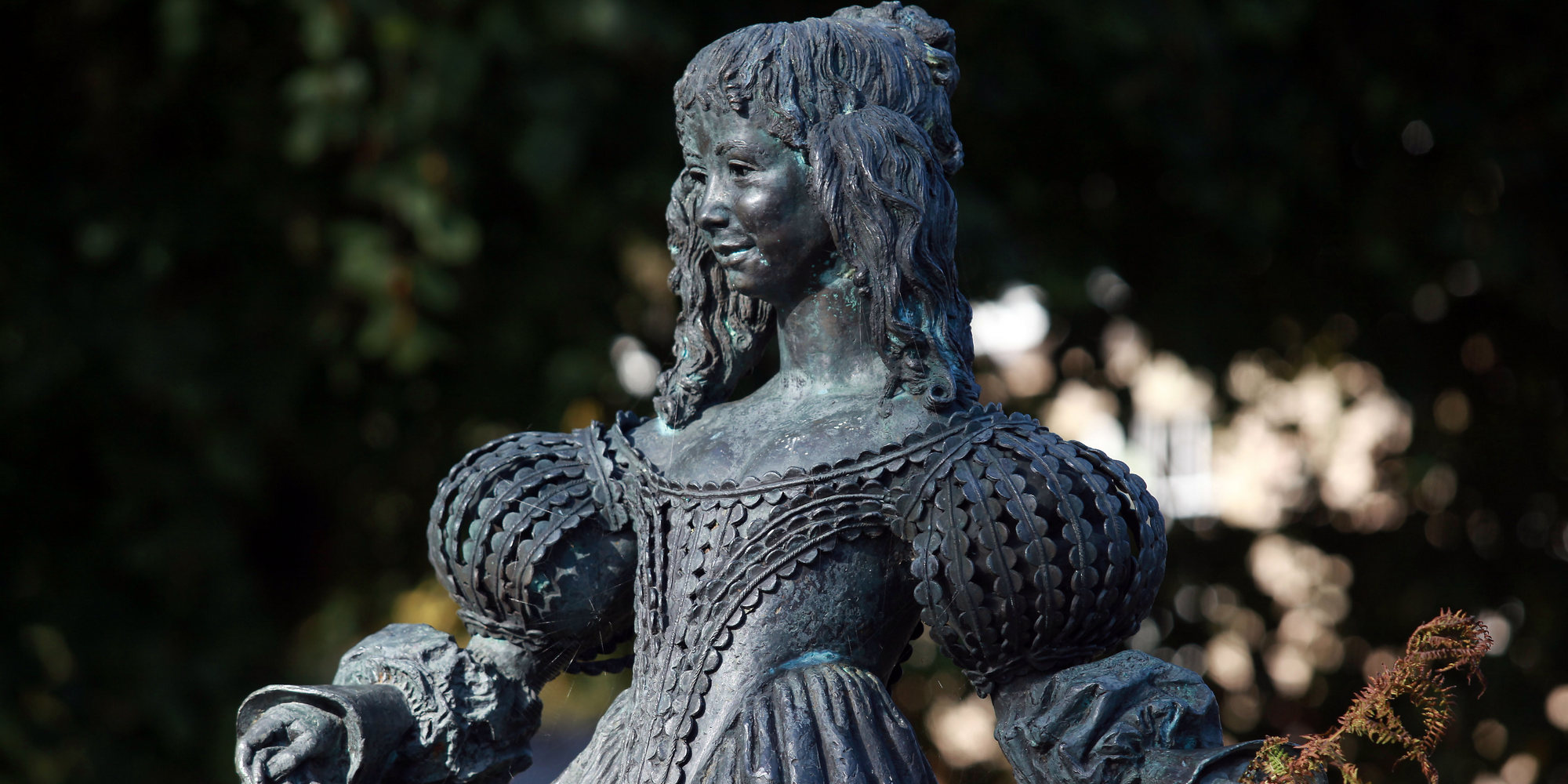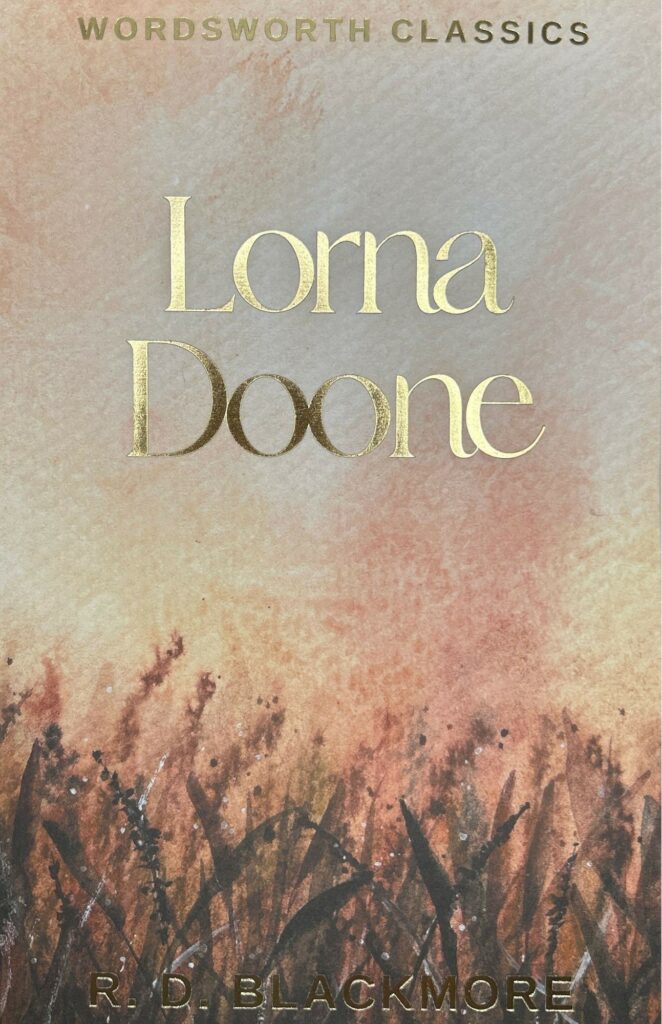
David Stuart Davies looks at Lorna Doone
David Stuart Davies looks at R.D. Blackmore’s romantic West Country classic. Lorna Doone
‘Either love me not at all, or as I love you, forever’
Richard Doddridge Blackmore (1825 – 1900) was a prolific author during the Victorian period but his fame now rests solely on one book, Lorna Doone, A Romance of Exmoor, which is regarded as the most popular regional novel of the nineteenth century. It is a rumbustious tale, exciting and remarkable for its close observation of West Country life and scenery. As with other successful writers of the period such as Sir Walter Scott and Robert Louis Stevenson, Blackmore also manages to provide a truly historical setting featuring actual events and characters to enhance the realism of his fictional scenario.
The story is set on Exmoor, an area of open hilly moorland in West Somerset and North Devon, during the late 17th century. Monmouth’s rebellion against the king, the bloody Battle of Sedgemoor and Judge Jeffries, known as ‘the hanging judge’, form part of the background to the narrative. John Ridd, a yeoman farmer, is determined to avenge his father’s death at the hands of the Doones, an evil clan from a nearby valley who pursue a career of murder and theft. However, John falls in love with Lorna, supposedly the granddaughter of Sir Ensor, the head of the Doones. John and Lorna have a secret relationship but a crisis arises when she is promised in marriage to Carver Doone, an archetypal Victorian villain, brutish, immoral and cruel, described by Blackmore as, ‘being very hot and savage and quite free from argument.’
When John rescues her from this fate, it is revealed that Lorna was abducted by the Doones when she was a child and is in fact the daughter of an aristocratic family. After many exciting convolutions in the plot, including Lorna inheriting her title and lands and John becoming involved in the rebellion against King James leading to him being knighted for his gallantry, it appears that we are heading for a happy ending. Eventually, John & Lorna are reunited and marriage is planned, but Carver is determined that this will not happen. He vows to shoot the bride on her wedding day. The story climaxes in an epic suspenseful chase across the moors and a fight between Carver and John.
Surprisingly, Blackmore had difficulty in finding a publisher for this richly dramatic tale, and it was first published anonymously in 1869 in a limited three-volume edition of just 500 copies; only 300 were sold. The author was resigned to having a flop on his hands but the following year it was republished in an inexpensive one-volume edition and it became a huge critical and financial success. Since then it has never been out of print. Significantly the novel was praised by many of the author’s peers such as Thomas Hardy and Robert Louis Stevenson. George Gissing observed that the novel was ‘quite admirable, approaching Scott as close as anything since the latter’. Even Puccini, the Italian composer, admired the tale and for a time considered turning it into an opera.
It was the potent mixture of high romance, thrilling and dramatic set pieces presented against the backdrop of one of England’s most tumultuous historical periods that has not only appealed to readers but also to film and programme-makers. Over the years there have been quite a few dramatized versions of Blackmore’s epic tale. There were three silent movies in 1912, 1915 and 1922, the latter directed in Hollywood by the young Maurice Tourneur, the French director. The first talking Lorna Doone was a British production in 1932 featuring John Loder as Ridd and Victoria Hopper as Lorna. A very young Margaret Lockwood appeared as Ridd’s sister.
In the late 1940s, Alfred Hitchcock expressed an interest in filming the novel but these plans fell through. In 1950 a new version went into production which was shot in America with Yosemite National Park, with its towering mountains and huge sequoia trees, standing in for Exmoor. As a result, some critics thought the film had more of the feel of a western movie rather than an English historical drama. Lorna was played by Barbara Hale and Ridd by Richard Greene who stated at the time: ‘I don’t think the British public will find too much fault with the treatment. What may be missed is the Cornish atmosphere.’
The location was moved again for the 1990 TV movie with filming taking place in Scotland, near Glasgow. The director Alan Horrox explained that the novel demanded sweeping moorland vistas, plunging waterfalls, and a secret valley: ‘When we researched the available locations on Exmoor, we discovered that much of the area had changed profoundly since the 17th century setting of the original novel… I believe it could never successfully evoke the dramatic sweep of this classic novel.’
The movie, starring Clive Owen (Ridd), Polly Walker (Lorna) and Sean Bean (Carver), was generally regarded as a faithful adaptation of the book.
There was a further filmed TV version from the BBC shown over the Christmas period in 2000. The cast included Amelia Warner (Lorna), Richard Coyle (Ridd), Aidan Gillen (Carver) and Michael Kitchen as Judge Jeffries. The movie received positive reviews and won the Royal Television Society’s Award for Best Visual Effects. That was twenty years ago and so one feels that surely another adaptation of this popular romance is imminent.
While Blackmore never achieved such significant success or critical acclaim for any of his other novels as he did for his Exmoor tale of love and treachery, it is very safe to say that the richness of story-telling in this novel is easily on a par with the best of Scott and Stevenson. In these difficult days, Lorna Doone is an ideal escape hatch to an exciting, romantic world peopled with engaging, well-drawn characters and gripping set-pieces. It is no wonder that this book, which featured on the BBC’s Big Read of the top 200 novels in 2003, has remained a popular classic through the years.
Image: Bronze statue of Lorna Doone by George Stephenson in Dulverton, Somerset. Credit: Mark Passmore/markpassmore.com / Alamy Stock Images
Books associated with this article
